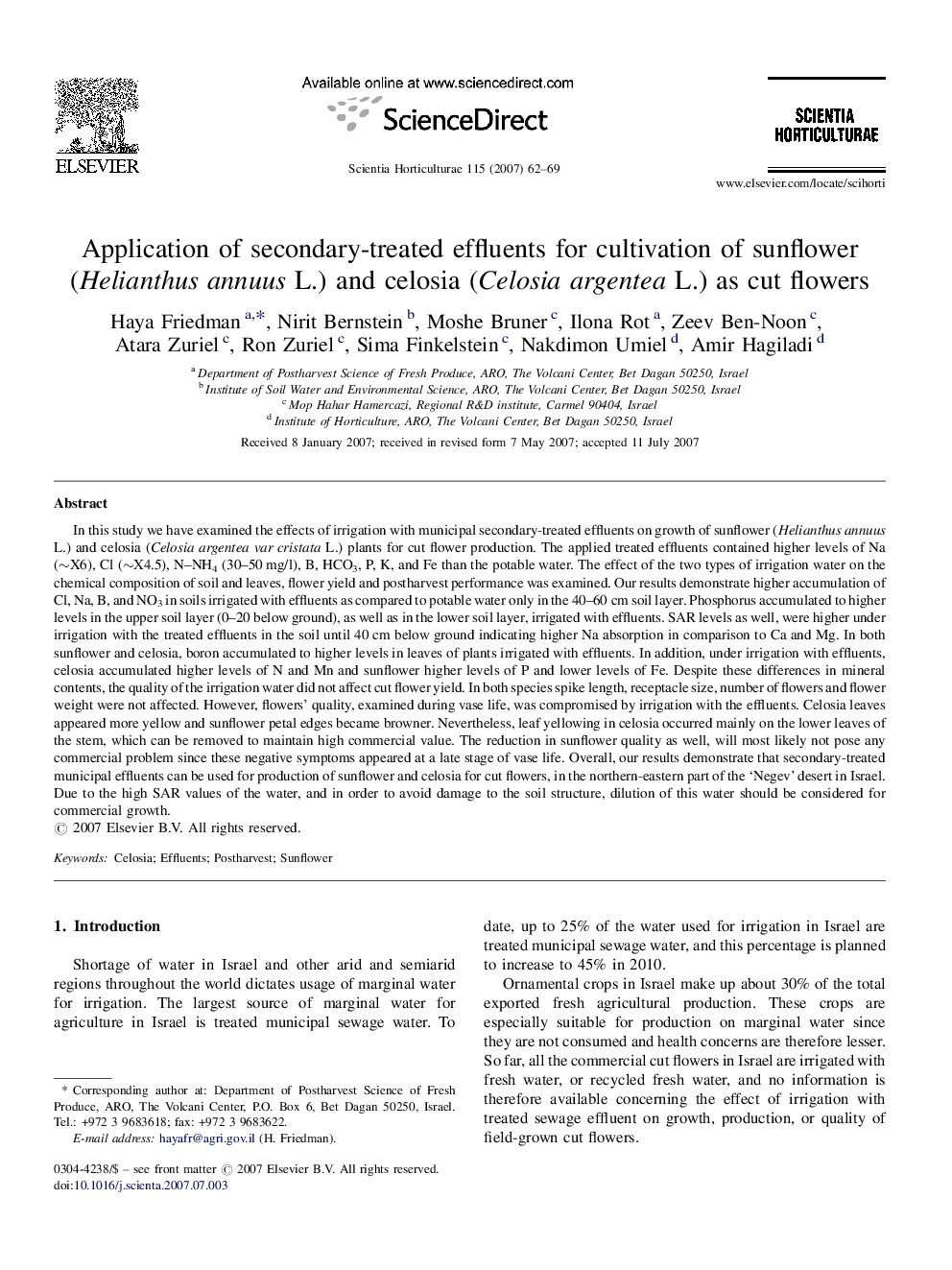| کد مقاله | کد نشریه | سال انتشار | مقاله انگلیسی | نسخه تمام متن |
|---|---|---|---|---|
| 4569664 | 1331349 | 2007 | 8 صفحه PDF | دانلود رایگان |

In this study we have examined the effects of irrigation with municipal secondary-treated effluents on growth of sunflower (Helianthus annuus L.) and celosia (Celosia argentea var cristata L.) plants for cut flower production. The applied treated effluents contained higher levels of Na (∼X6), Cl (∼X4.5), N–NH4 (30–50 mg/l), B, HCO3, P, K, and Fe than the potable water. The effect of the two types of irrigation water on the chemical composition of soil and leaves, flower yield and postharvest performance was examined. Our results demonstrate higher accumulation of Cl, Na, B, and NO3 in soils irrigated with effluents as compared to potable water only in the 40–60 cm soil layer. Phosphorus accumulated to higher levels in the upper soil layer (0–20 below ground), as well as in the lower soil layer, irrigated with effluents. SAR levels as well, were higher under irrigation with the treated effluents in the soil until 40 cm below ground indicating higher Na absorption in comparison to Ca and Mg. In both sunflower and celosia, boron accumulated to higher levels in leaves of plants irrigated with effluents. In addition, under irrigation with effluents, celosia accumulated higher levels of N and Mn and sunflower higher levels of P and lower levels of Fe. Despite these differences in mineral contents, the quality of the irrigation water did not affect cut flower yield. In both species spike length, receptacle size, number of flowers and flower weight were not affected. However, flowers’ quality, examined during vase life, was compromised by irrigation with the effluents. Celosia leaves appeared more yellow and sunflower petal edges became browner. Nevertheless, leaf yellowing in celosia occurred mainly on the lower leaves of the stem, which can be removed to maintain high commercial value. The reduction in sunflower quality as well, will most likely not pose any commercial problem since these negative symptoms appeared at a late stage of vase life. Overall, our results demonstrate that secondary-treated municipal effluents can be used for production of sunflower and celosia for cut flowers, in the northern-eastern part of the ‘Negev’ desert in Israel. Due to the high SAR values of the water, and in order to avoid damage to the soil structure, dilution of this water should be considered for commercial growth.
Journal: Scientia Horticulturae - Volume 115, Issue 1, 10 December 2007, Pages 62–69